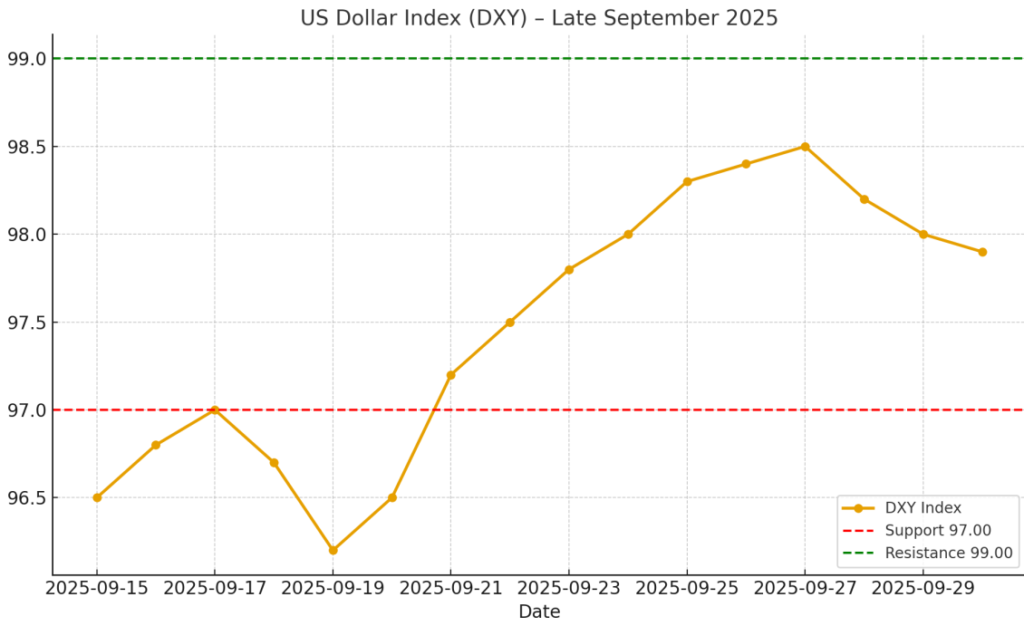
Main Points :
- Bitcoin (BTC) recently fell back after an initial rebound, with market participants citing macro concerns and a lagging window in futures influencing sentiment.
- On-chain metrics suggest BTC may be “oversold”, yet some data also indicate distribution or cycle-top risks.
- Key upcoming macroeconomic releases (ISM manufacturing/non-manufacturing PMI, ADP employment) and central bank commentary are set to influence asset-class flows into crypto.
- From a technical perspective, BTC is hovering near critical support levels (in USD terms) and faces triggers for rebound or further decline.
- For investors hunting new crypto assets or yield opportunities, the current BTC setup may offer a window to accumulate or rotate—if risk is managed and horizon is clear.
1. Recent Price Action: From Optimism to Sidelined
In a weekly report published by bitbank analysts (via contributor Yuuya Hasegawa) in Japan, it was noted that BTC against the Japanese yen recently depreciated after a brief rebound. Specifically, following improved hopes around U.S.–China trade diplomacy, BTC rallied to around ¥17,500,000–¥17,800,000 before losing steam and slipping below ¥17,000,000.
Key events weighed on the market: the opening of a “gap” in CME Group futures positions, new U.S. spot ETFs (such as for LTC) triggering “sell the news” type flows, and the Federal Reserve Chairman’s comment that a December rate cut was still “a long way off” — all of which dampened risk-on sentiment.
In U.S. dollar denominated terms, BTC is now consolidating in a range, with resistance near the ~$114,000–$116,000 zone and support near the $109,000–$110,000 region.
For readers seeking new crypto investments or blockchain use-cases, the key takeaway is: the broader macro risk environment (rates, liquidity, geopolitics) remains a dominant driver — more so than just crypto-native news.

2. On-Chain & Sentiment Signals: Oversold or Warning Flag?
Oversold Case
Analysts at Brave New Coin pointed to BTC’s Relative Strength Index (RSI) dropping to around 36 — a historically significant oversold reading which has preceded strong rebounds (often 15-25 %) when the trend turned.
Meanwhile, other data show markets in a “fear” state: the crypto version of the Fear & Greed Index remains in the low-30s zone, and trading volumes have dropped significantly, suggesting caution among participants.
Warning Case
However, counter-signals exist. According to a recent piece at CCN, the RHODL ratio (a measure of long-term holder dominance) elevated, and the “Accumulation Trend Score” (which tracks large-entity accumulation) is very high — historically signals of a cycle top or distribution phase rather than the beginning of a sustainable bull run.
This dual narrative — oversold momentum vs. cycle-top distribution signals — is particularly relevant for investors seeking “next-big-thing” crypto assets: it suggests caution in assuming a clean breakout now; risk management is essential.
Implications for Blockchain Investors & Token Hunters
For those looking beyond simply holding BTC, this period could offer an opportunity to evaluate altcoins or emerging protocols. If BTC stabilizes and macro conditions improve, risk assets may flow into smaller tokens. On the flip side, if the top-cycle distribution plays out, the broader market may be exposed to a deeper correction — reducing risk appetite across projects.

3. Macro Triggers Ahead: What to Monitor
The coming week is especially important because several macroeconomic releases and policy cues could amplify BTC’s movement:
- The U.S. ADP employment report
- ISM manufacturing and non-manufacturing PMI
- Commentary from the Fed on rate-cut timing
The Investing.com outlook highlights that BTC’s current trade near ~$114,600 reflects a pivot where institutional flows, eased trade tensions, and anticipation of a ≈0.25 % Fed rate cut are all in play.
If weaker-than-expected data arrives (e.g., employment cooling, manufacturing slump), the market may price in a higher chance of a near-term rate cut — which historically benefits higher risk assets like crypto via lower real yields and weaker USD. On the other hand, strong data could delay easing, raising yields and reducing risk-asset appetite.
For Crypto Investors
- Watch the $109K–$110K support in USD terms (or equivalent in JPY) — a break could trigger stop-loss cascades or increased hedging flows.
- A sustained hold and rebound toward ~$116K–$120K could mark a near-term turning point, which might unlock flows into altcoins and DeFi protocols.
- Given the macro dependence, ensure your exposure (whether in BTC or a token) aligns with your risk tolerance and time horizon. For instance, if you are preparing for new token issuance or ecosystem launches, you may consider deploying only a portion of capital now and waiting for clearer breakout signals.

4. Technical & Support/Resistance Landscape
From a technical lens, the charts present a range-bound situation yet with actionable levels:
- BTC remains below key moving averages (MA20, MA50, MA100) which are arranged in a bearish stacking for short to medium term.
- Support at ~$109K–$110K is critical; a breakdown could expose the ~$105K–$100K zone.
- On the upside, a breakout above ~$116K–$120K could open space toward $120K–$122K and possibly higher.
- Patterns such as a rising-wedge, combined with long-term moving average crossovers (the so-called “death cross”) are throwing caution flags: the weekly chart shows risk of a 15 %–35 % dip if the pattern confirms.
Practical Considerations for Your Use Case
Since you are involved in launching or designing blockchain/cryptocurrency projects (e.g., token issuance, wallet infrastructure), these technical levels can inform:
- Budgeting for token liquidity pools or incentives: If BTC’s correction deepens, funding denominated in USD or stable coins may become more expensive relative to crypto value.
- Timing of token releases: If BTC rebounds and risk appetite returns, deploying earlier may capture tailwinds; if BTC slides, you may prefer to wait for a stronger base.
- Risk hedging: If your protocol budget or treasury has exposure to BTC or other major assets, embedding hedges (e.g., options, stable-coin vaults) during this window may make sense.
5. Why This Matters for “Next Source of Income” Seekers
For investors hunting new opportunities, both the macro/technical setup and the on-chain signals combine to create a strategic window:
- Accumulation Opportunity: If BTC is washed out and macro conditions turn favorable, early entrants into altcoins or new ecosystem tokens stand to benefit.
- Rotation Signal: A BTC breakout can act as a trigger for rotation into yield-oriented DeFi, token launches, staking ecosystems — precisely where new income streams may originate.
- Caution Flag: On the flip side, if BTC is topping, forward-looking investors may prefer to reduce exposure to speculative tokens and protect capital (especially relevant for your work in token projects and wallets).
Given your background in blockchain, wallet architecture and token frameworks, the structural role of BTC in the ecosystem is critical: it remains the anchor, the dominant asset. Its behavior influences capital flows across the entire crypto stack. Monitoring these signals closely enables you to time strategic moves — whether aligning a token issuance, launching a wallet feature, or reallocating treasury assets.
6. Conclusion
In summary:
The latest commentary from Japanese OTC and crypto markets correctly highlights that BTC currently appears “oversold” given macro expectations around rate cuts and trade-diplomacy, yet the broader structure is vulnerable given on-chain distribution signals and bearish technical patterns. The next week is pivotal: U.S. macro data and central-bank commentary may tip the balance either toward renewed BTC strength (which could unlock token and protocol upside) or toward deeper consolidation/correction (which should caution risk-taking).
For investors and practitioners seeking new crypto assets and practical blockchain applications, this juncture offers both opportunity and risk. The key is to stay agile: if BTC breaks out, rotate into innovation; if BTC breaks down, protect and preserve, while scouting for infrastructure plays and undervalued launches. Embed these signals into your strategic planning — whether for token issuance timing, wallet feature roll-outs, or treasury allocation — and align with your horizon and risk profile.

